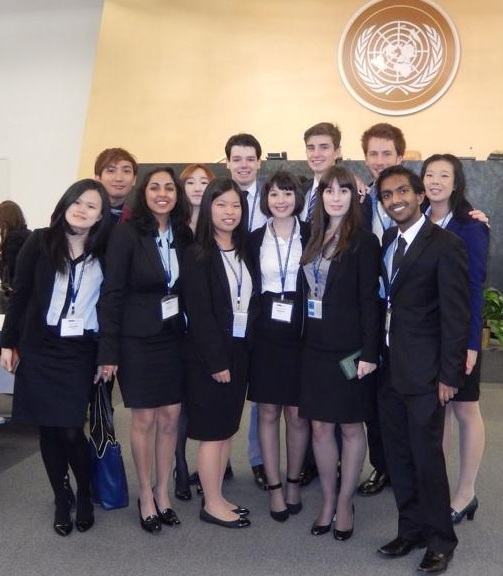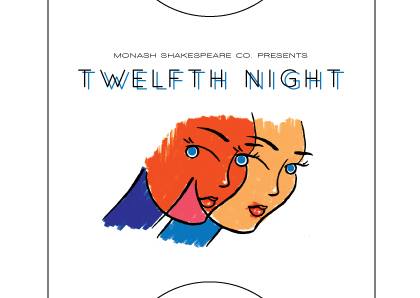In the Fires, We Weep is a dance piece exploring the nine circles of hell as depicted in Italian poet Dante Alighieri’s The Divine Comedy: Limbo, Lust, Gluttony, Greed, Anger, Heresy, Violence, Fraud, and Treachery created by James McGuire. The ensemble will become the role of demon-like creatures, who hundreds of years after falling from the earth are now inhabitants of the gritty, black caverns of flame underneath the dirt where the damned reside: The Inferno.
LW: Tell us a bit about yourself; what is your dance background? What are you studying at Monash?
I’m studying a bachelor of performing arts, and I’m about halfway through my third year. My dance work is strongly influenced by Butoh. Butoh is a Japanese dance form that focuses on transcribing images onto the dead body; the traditional way to perform it is to paint the body completely white and wear minimal clothing – it’s about stripping the body back, stripping it right back to its core.
LW: So it’s really about intimacy?
It depends on the performance, and the atmosphere the dancer intends to generate. There’s a lot of vulnerability with performance in Butoh. There’s lots of tension and effort; if you watch Western ballet for example, it’s all about the ease, whereas with Butoh there’s something really beautiful about watching the effort, and the struggle, of the dancer on stage. Some will perform it very slowly, with a lot of control, a frailty to it, a brittleness; others will be erratic and fast – it’s very much a personal thing.
LW: So it’s really using human physicality to express the human condition.
It could definitely be looked at in this way, yes.
LW: Does it have strong connection to performance art?
Well it emerged in the late 50’s / early 60’s during Japan’s ‘angura’ period; angura meaning ‘underground’; this was the period when Japan’s art scene – music, performance, literature – was undergoing a radical cultural revolution in response to the post-WW2 Americanization. The first performance by the founder of Butoh, Tatsumi Hijikata, was performed in a modern dance setting, and it shocked and appalled Japan’s conservative audience. His piece had reference to themes of homosexuality, paedophilia and death – completely dark and taboo themes at the time. Hijikata was declared an iconoclast and went into hiding performing his work in the underground society. So Butoh has always had …
LW: A sort of subversive element? Challenging social norms and such?
Definitely. At the time of its conception, that was such a fundamental element. Nowadays, it’s not as dependent. But it’s so important to Japan’s social and cultural history.
LW: Especially since not only is it cross cultural, but also it seems, cross generational as well.
Oh yes, but Butoh is very adaptable to change. I guess before this interview I hadn’t realized how ‘performance art-y’ it was; I had mainly associated it with dance. Performance art really should be in the socio-political sphere, and Butoh certainly was in its conception. Some argue that Butoh is no longer alive, it’s ‘dead’. I approach this issue humbly, although I’m not sure I agree with that analysis. As I’ve said, it’s adapted, and it is now… well, what exactly? Dance? Theatre? Dance-theatre? I suppose we choose to make of it what we will.
LW: At the end of the day it’s just semantics.
Exactly. At the end of the day it’s just body and space, the manipulation of movement, or lack of, you know? In a way, it’s all dance to me. I guess I’m still trying to work out my own definition.
LW: I assume it’s very different to what other people are doing now in contemporary dance, especially here, in what you’re studying.
I do have a reputation as the Butoh boy around the course, and this reputation is slowly growing here at MUST too. I am often reluctant to acknowledge it, but this quite excites me. But yes, not many emerging theatre makers I’ve encountered have a firm grasp on what Butoh is or can be. In saying this however, there is often an appreciation for it when it’s discovered. A large part of my intention for this piece is to thrust Butoh into a more… general audience …
LW: An unassuming audience?
Yes, exactly. A wider audience. Hopefully it will lead to a curiosity and an inquiry towards Butoh.
LW: What’s the relationship with Butoh and your performance piece? Why Dante’s Inferno?
Something about hell, demons, and Butoh struck me as a good idea. In regards to the text, it’s one I’d wanted to read for a considerable amount of time, so I finally sat down and gave it a go! I discovered an incredibly rich text; the imagery was striking and vivid, it was so enticingly dark. I guess somewhere along the way I started thinking about it with a Butoh frame of mind. We have darkness, visceral imagery, hell, demons – it all came together for me, and I thought, I can really see this as a body-focused dance work.
LW: What are the themes of ‘Inferno’ that you trying to conjure up in the performance? What aspects of the narrative do you find particularly important?
We’ve tried to stay quite true to the text. It’s highly unlikely that an audience member will follow a tangible, linear narrative; but those who do have an understanding of the text will know what is going on – so like the presence of Cerberus, who Lucifer is and where he emerges – they’ll have that to hold on to. For me it’s all about the image from the narrative; it’s about taking something that stands out in the text and working it with the performers’ bodies and the overall scenography – the lights, the sound, the space – and then seeing what sort of choreography can we implant into or onto these bodies to create something that is visually striking. Someone in the audience last night said that they really liked how they could experience this work; they didn’t necessarily have to be all ‘critique-y’; there’s something beautifully architectural about this work which tries to bring it away from the intellectual realm. However, this isn’t to say that it isn’t an intellectual work also.
LW: Definitely. I think how you engage with dance is very unique to any other form of narrative; it doesn’t have that textual element to it, say like plays or film or literature, which removes it from more traditional interpretations. How do you think the story translates as a dance piece?
It translates well, I think. For me it is a way of bringing the text to life, from off the page and onto the stage. If I may say so, I think it is quite visually dynamic. There’s definitely a shift between the scenes; it keeps you there, it holds you in. The image produced in the writing definitely assists this. I would like to see more text-inspired dance works, especially classical texts.
LW: And Dante’s Inferno is quite a significant text in the canon of Western literature. So what was the creative process behind the choreography? How did that come about?
Hectic! I approached the position of choreographer from a dramaturgical perspective, which for me was an abolishment of the idea of going off with some music and creating some moves to bring back and teach to the cast; I find that to be a boring way to do things, a limited capacity for a chorographer to create a piece. The cast was absolutely integral to the choreographic process. I put them in a framework that I thought would allow them a capacity for freedom, but that also rang true to my artistic vision for the show.
LW: So was it a collaborative process? What was the dynamic between you and the performers?
Definitely. The performers were crucial in the dance-making process. Fortunately, I feel that no matter how much I gave over to them, ultimately they were working with me.
LW: To execute your conception of the piece.
Yeah. We have an eclectic mix of performers, so it was really exciting for me. We had ballet dancers, contemporary dancers, one with hip-hop training, some with no dance background, and some with a strong theatre background. I loved having all these different types of bodies, in terms of training and experience, to be able to work with and watch.
LW: Was it the first time you had directed an ensemble piece
Yes. I asked the cast to trust me in this long, arduous process; 16 hours a week for nine weeks – and they did! I have a big imagination; I think one of the things that is key for a director to have is imagination. The ability to think critically and possess a vivid imagination, that is what you need to have.
LW: What was the main hurdle you had to overcome it producing the show?
I guess time was very difficult to co-ordinate; we had two four-hour rehearsals and one eight hour one a week, and these are quite significant and important; we needed every cast member to be at every rehearsal, every hour. Having to manage lots of different timetables and lives was a challenge. Navigating through the text also proved a challenge at times. The translation we used was far from prosaic which meant that the text had to be read very closely. What we took from the text (the images, the actions, the ‘scenes’) were carefully considered.
LW: So you’ve had your first performance last night; how did that feel? Are you relieved?
It felt great! I heard some really positive feedback. I was never really worried about the final product. The rigour and commitment that was brought to it by the cast, the crew, the creatives, made it come together very beautifully. I think that there is a process of handing it over, and at 7:25 last night, that was when I released it and gave it over to my performers. It was my time to become an audience member, sit back, and let them work with what we’ve been creating over the last nine weeks. I feel sad, almost like post-show blues even though the show isn’t over yet, because artistically in a way I’m redundant. But it’s been an amazing, amazing process.
LW: It sounds great. I’m really excited to see the show tomorrow night, I’m sure its brilliant.
I wanted to create a high quality performance; striking choreography and strong imagery was my main priority. A friend of mine once told me ‘good theatre is theatre that changes you’. That it what I set out to do. The performance will definitely linger with you.
In Conversation with James McGuire – In Fires We Weep
previous article
To Vaccinate Or Not To Vaccinate?
next article


